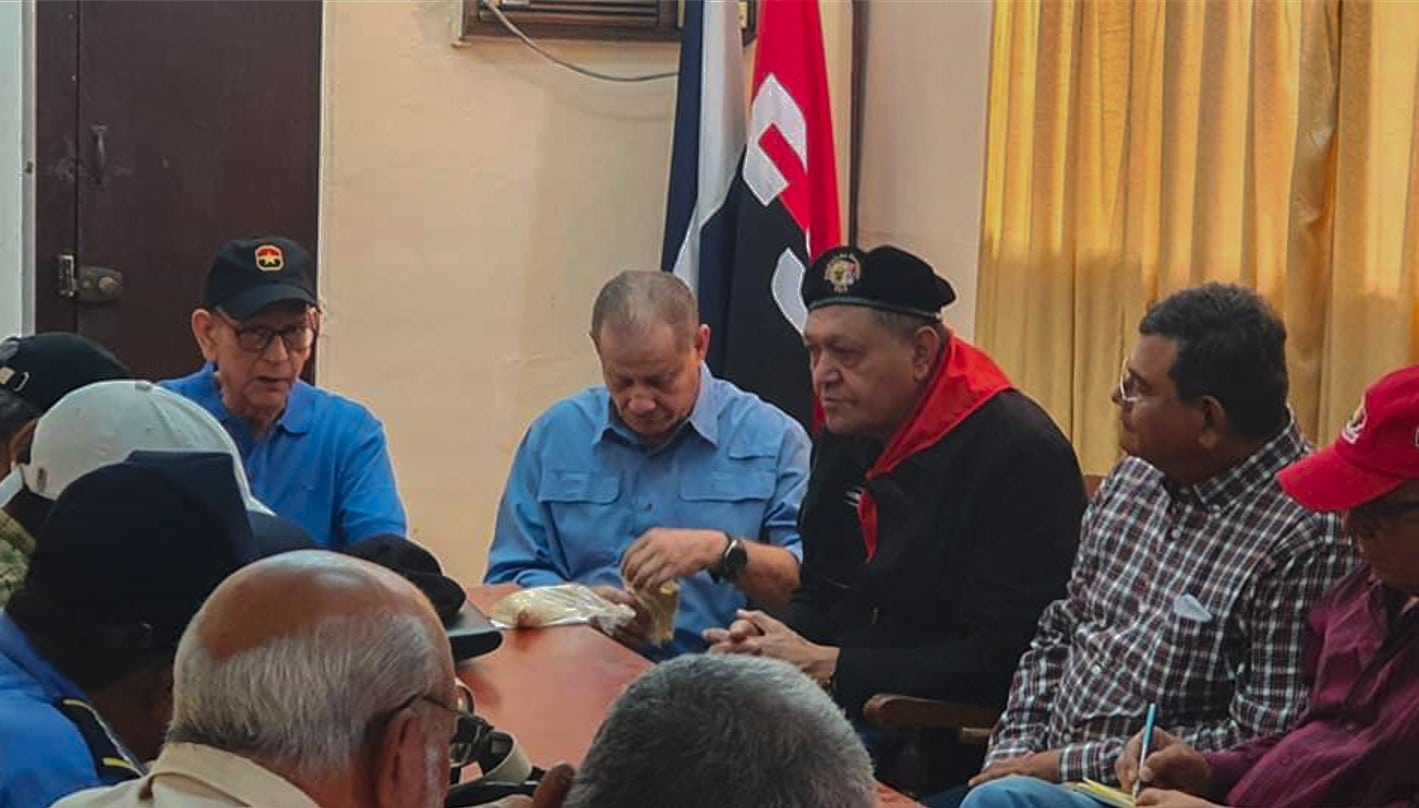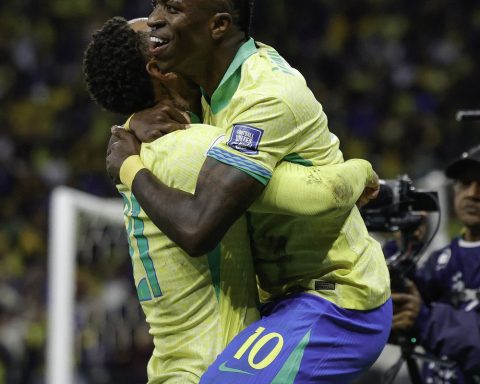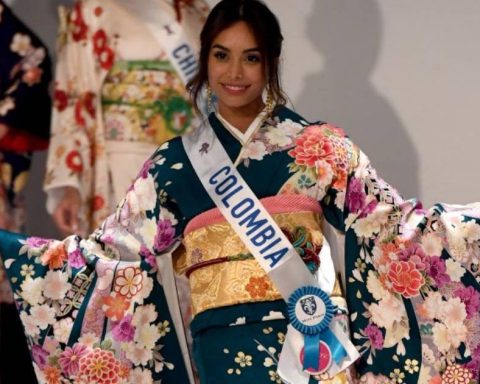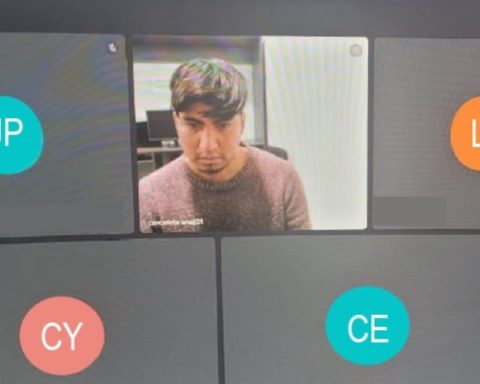At night, when thousands of public employees are comfortable in their homes, the lawyer Marlon Gerardo Sáenz Cruz, known as Chino Enoc on social networks, frequently challenges Rosario Murillo, number two of the regime.
It addresses historical militants: those who participated in the fight against the Somoza dictatorship, overthrown in 1979, but also those who joined the Army in the first Sandinista government and who were later demobilized.
It is not clear how many there are. If indeed they include the Sandinista collaborators, the militants, how many of them are victims of war, but a brief profile constructed – from about ten interviews in this report – indicates that the majority are poor, between 60 and 70 years old, suffer from chronic diseases of their age such as diabetes, high blood pressure or arthritis. Politically, they define themselves as loyal to Daniel Ortega and to the “ideal of the revolution” and reject —all of them— the vice president.
The tomb of the guerrilla (Sandinista song) begins to play and Sáenz begins to address his audience. Two red and black flags behind him, a scarf around his neck complete his scenery. He says that Ortega is being kept in isolation.
Saenz urged a rebellion on April 5, addressing Lenín Cerna Juárez, former head of State Security in the eighties, former director of the former Ministry of the Interior in charge of espionage and accused of serious human rights violations.
Cerna was removed from the position of the FSLN Organization Secretariat in 2011, after internal struggles precisely with Murillo. “Commander Lenín has a great affection for him, a great love for Daniel, and for that reason he disciplines himself, but I want to make a call to him: let’s not let the FSLN fall (…), to the extent that the right-wing control that it is doing is strengthened. Rosario within the FSLN, that can cause a division. It’s time to stop it at thirty. I am sure that you are calling us and the whole of Nicaragua is summoned and we make our strength felt,” Sáenz tells him.
For him, Ortega is the “moral” leader of the Sandinistas, followed by Tomás Borge—already deceased—and Cerna. “Tomás is not here, you are the moral authority,” said Sáenz, addressing the former head of State Security.
On March 28, the cracks between the historians and Murillo widened. An memorandum signed by retired colonel Leopoldo Rivas Alfarocoordinator of attention to the historical Sandinistas in the ruling party, irritated them.
It was not the first clash that Rivas Alfaro has had in recent years with this group of old FSLN cadres, but now they have been ordered to deactivate themselves and to cease their participation in intelligence activities against “the enemy” through the Police. .
According to a note from 100%News, In one of those public frictions that preceded this new decision, Rivas Alfaro asked the historians in an assembly in February 2020 who supported the party, while they were in opposition. “You guys? He asked and then told them, “It wasn’t the historical Sandinismo, it was these new comrades, led by Commander Ortega, who toured Nicaragua three times.”
Murillo’s new attempt is seen as the search for total control of the FSLN structures, alleging a supposed unity between the most experienced and professionals in the so-called Electoral Victory Units (UVE), which were useful for espionage work in the neighborhoods ahead of last year’s illegitimate presidential elections.
As public evidence of the contradictions within the FSLN, they point to the siege by the National Police against the veteran militant Sandra Martinez, who blamed the political secretaries of the area.
They also remember the arrest of Gerardo Mirandaformer mayor of San Juan del Sur and former Sandinista deputy, who was arrested for a week in El Chipote, after a meeting with “historic Sandinistas”, which was taken by Murillo as a “conspiracy”.
You can also find some posts on social networks, in which Ortega supporters try to dissuade internal critics. From a profile on Facebook, called “el combativo”, an alleged speech by Tomás Borge is recalled in which he maintains that Ortega’s victory was a “light of hope in the conscience of the revolutionaries.” “If the right has won, the Bush administration would not have given them salt for a jocote,” he said.
Silence in times of repression
When an attempt is made to consult them, whether they are sympathizers or dissidents of the FSLN, silence is imposed, a product of the context of repression. In Nicaragua, a de facto police state prevails that violates the population’s rights to assembly. There are at least 181 political prisoners.
CONFIDENTIAL He spoke with a member of the so-called “historical Sandinism.” He agreed to speak on condition of anonymity, like three others organically separated from the government party for years, but with ties to his former comrades-in-arms.
“For us it is a matter of party discipline. We obey the orders of Chayo (Rosario Murillo) not to challenge Ortega. We are Sandinistas, even though we don’t want her,” explained the militant.
The first Sandinista dissident flatly rejected the position of deactivating them. “Historic Sandinism simply cannot die,” he said, but acknowledged that fewer and fewer people are talking about the issue, which is explained by the terror imposed by those in power.
As an example of what the presidential couple is capable of doing to preserve the Presidency, remember the death in captivity last Friday, February 11, of retired General Hugo Torres, hero of the anti-Somoza struggle and political prisoner of the current regime.
They also think of the imprisonment of Dora María Téllez, another former commander with an outstanding career in the overthrow of the dictatorship in 1979. “That (the political trajectory of Torres and Téllez) did not matter at all, there is no respect here,” he maintained.

From the shock groups to the 2018 repression
The origin of the organization of the historical Sandinistas dates back to 1990, when Daniel Ortega grouped into a single pocket those who participated in the war.
The objective was to keep them under control—some of them continued with the approach of armed struggle, despite the peace—, but there was also the purpose of using them as shock troops when required.
In the FSLN, along with the figure of the “historical combatant”, there was also that of the “historical collaborator” who were people who were not linked to the political structure, but contributed with safe houses, economic resources or simply participated as couriers in the war, that is, they carried messages safely between the Sandinista network.
The historical ones from the 1990s were the groups used by the FSLN to sow chaos, such as the well-known Víctor Cienfuegos in the San Judas neighborhood, who was accused of agitator and terrorist at the time.
In the same pocket of those “hot heads”, at the service of Ortega and his circle, they reached from combatants in the stage of the insurrection against Somoza, but also the people who participated in the war distributed throughout the national territory.
León, Matagalpa, Diriamba (Carazo), Estelí and Masaya were the places where the historians played a more prominent role, helping Ortega in his project of “governing from below” as the stage of destabilization promoted by the FSLN in the 1970s was known. Governments that followed 1990.
“They are the so-called shock forces that were looking for an economic claim,” the source explained about the main reason they had for mobilizing.
The role they played in the repression
When anti-government protests broke out in 2018, they were brutally repressed by the state. The IACHR reported 355 deaths, 2,000 injuries, and more than 100,000 people going into exile to protect their integrity.
Ortega reorganized those shock groups under the command of cadres with military experience. They supposedly put order in the territories. They convinced the population to follow their orders, alleging mysticism, closeness to Ortega, and some of them handled economic resources to carry out the plans foreseen by the party.
In his speech on April 5, Chino Enoch acknowledged that he collected information against the opposition in Masaya and Matagalpa in 2018. “I dressed up, I wore a beard, a hat, but I did not go to the cachimbeo, because I cannot walk,” he acknowledged. .
A source explained that in most cases, however, “the role of the old militants was to be the sole command with which they resolved the clean-up operation.”

The “clean-up operation” was the violent clearing of the barricades. They had been erected in the neighborhoods by the population to protect themselves from the police and paramilitaries. The authorities’ attempt to uninstall them was to suffocate by force the massive discontent of the population with the regime.
In the following four years, those old militants gradually lowered their profile. Some of the best known have died, such as Edén Pastora, the former “Comandante Cero”, who died being faithful to Ortega.
Someone who knows the history of the Sandinista party commented that the contradictions observed in the institutions, between the veterans and the “Murillistas” are also expressed in the leadership.
The vice president has territorial control and also that of the cabinet, which provides economic resources that can be used according to their own interests.
A sociologist was of the opinion that when historical militants cite the FSLN statutes to complain about Murillo, they are simply referring to a party that no longer exists. Everything has been under the control of the presidential family for years.
“For me it is like the last kick of the old FSLN. Many of them feel dissatisfied, excluded from the privileges of the State. The reality of what may happen depends on how that is combined with dissatisfaction in other areas, but what no one can deny is the episode of tension with Rosario again at the center of it,” said the expert.
Perbends and the logic of the FSLN
Nicaraguan political scientist Silvio Prado, based in Spain, stated that it must first be understood that this party “has no ethics or mysticism, but is united by interests.”
“The FSLN is an organization that survives by distributing selective incentives to its people, within the territory, those who manage the exploitation of gold, wood, drug trafficking, and those who manage links to human trafficking. It is a party that works on prebends and feuds in the territories,” Prado reasoned.
For the municipalist, a factor that cannot be ruled out is that this year there are municipal votes and these local power games are formed around the quotas of power that are obtained precisely in that process.
“I want to be a councilor, mayor, I want to manage power, you are not going to put me from Condega (in Estelí) as a kid who did nothing for the party in 2018,” said Prado, trying to explain these possible contradictions.
For more than 15 continuous days, in a consistent manner, the historians have been frequently denouncing Murillo, to what Chino Enoch calls the “Chayotal”, referring to the supporters of the vice president.
The night of April 12, while the Police captured to members of a music band critical of the regime—on the fourth anniversary of the protests—Chinese Enoch looks troubled in his usual video.
A few days ago, he reported that he received an unexpected visit from an alleged Honduran hit man at his home. He warned that his life and that of his family are in danger. “I am not going to escape or run, I do not carry drugs, whatever invention they say, it is not true! Anything that happens to me is the responsibility of the Police, ”Saénz Cruz insisted from her social media accounts.















